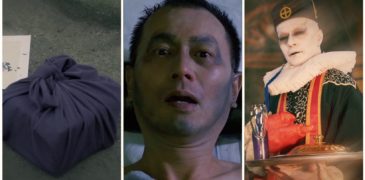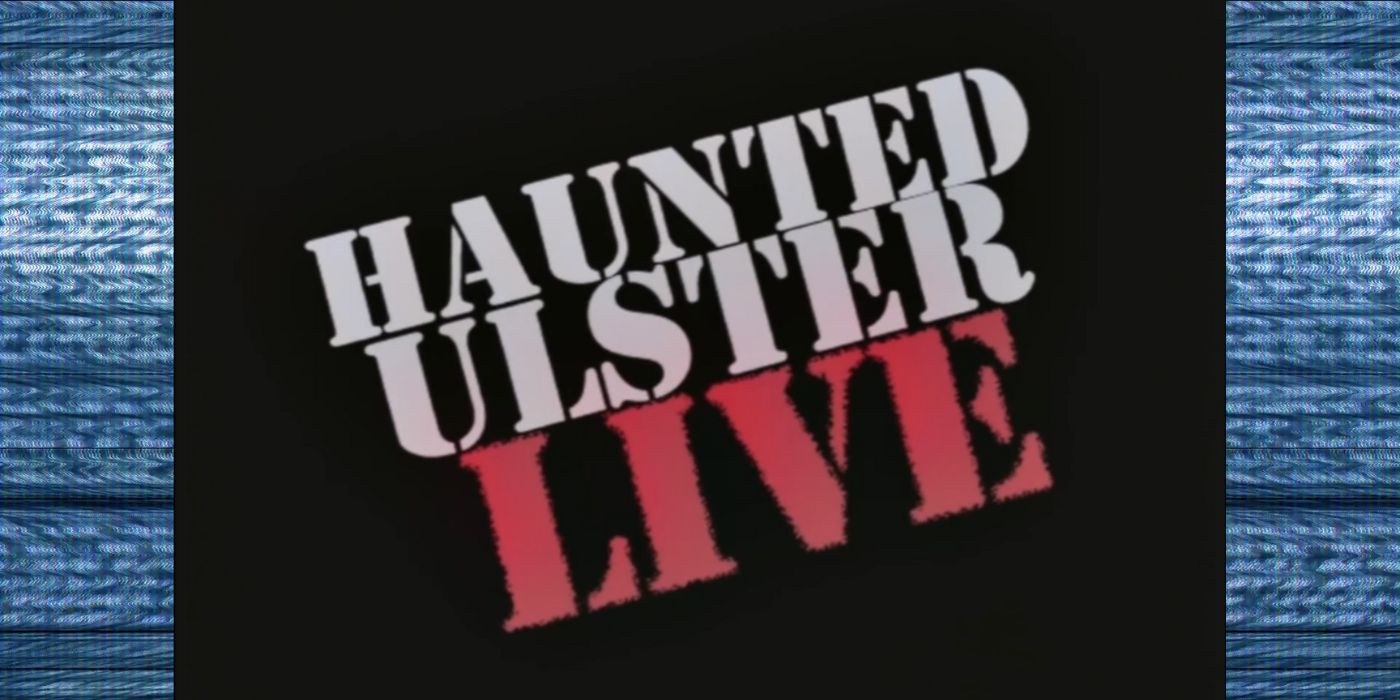
In the tradition of pseudo-local-TV broadcasts like Ghostwatch and WNUF Halloween Special, homegrown horror heads to N.Ireland in Dominic O’Neill’s Haunted Ulster Live. Set in 1998, TV newscaster Gerry Burns teams up with an aspiring children’s broadcaster to offer viewers a spooky Halloween special for the local network. They investigate a haunting at home, and what initially seems like a rating-grabbing way to celebrate the holiday turns into a nightmare for the crew.
It is difficult not to look at Haunted Ulster Live and see a rehash of the previously mentioned productions that acted as obvious inspirations for the work. Not only does the film follow a familiar flow, but it focuses on capturing an era rather than terrifying its audience. Still, Haunted Ulster Live does enough to make its own mark.

Where the production hits its stride is capturing the nostalgia of what many would call a ‘simple’ time on TV, with broadcasters acting as local celebrities and the height of video editing being cruelly inserted graphics. At the same time, Haunted Ulster Live finds its comedic stylings by reveling in the time frame and playfully mocking both live broadcasting and the general culture of the time; including a nod to satanic panic hysteria. The smaller cast of largely unknowns gives the movie an authentic feeling, bringing charming or comedic eccentricities to their characters, further resonating ‘local celebrity’ from TV.
In terms of horror, Hunted Ulster Live does not aim to shock or frighten the audience, similar to Ghostwatch or WNUF, instead leading up to an event that one would objectively classify as ‘horrific’ for those experiencing it. Here, though, and to avoid spoilers, the twist is arguably the best this micro-genre has produced. It may require a slight leap in logic, but it is an entertaining scenario that is accompanied by a sharp visual shift to deliver a strong climax that delivers and will catch viewers off guard.

Despite much of the movie’s work, there are shortcomings in execution, with authenticity being the biggest oversight. Comparatively, WNUF utilized vintage tape stock and S-VHS and DV cameras to nail its aesthetic perfectly, whereas Haunted Uster Live appears to have been shot in HD and then edited to give it its retro look.
Comparing the two may seem unfair, but it is difficult not to when both follow a similar formula in the found footage genre (particularly in the 90s TV niche). Moreover, when a production aims to immerse the viewer in a certain era, any shortcomings are prominent. Sadly, Haunted Ulster Live’s hook also limits it from being perfect because of its execution.
The other notable slip-up is that the production only partially immerses itself in the Halloween spirit. Adding additional commercials, costumes, or decorations could have helped cement the movie’s staying power by tying it closer to the holiday. For a film that takes place during the spooky season, there is little of it on display.

These issues do result in Haunted Ulster Live falling short of what came before it. However, it is still an entertaining attempt at making a time capsule, and those who do love films like WNUF and Ghostwatch will want to throw this in the Halloween rotation–at least it can benefit from stylistic proximity to the better realized seasonal horror.
There are some criticisms of the execution, but Dominic O’Neill’s love letter to 90s horror with a regional flair is still certain to appeal to many. I was engrossed, but Ghostwatch and WNUF are personal favorites within the found footage genre. If neither of those movies connected with you, Haunted Ulster Live will do little to win you over to the neat little microgenre of found footage.
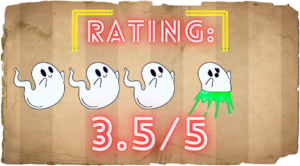
We Watched Haunted Ulster Live (2023) as Part of
The Unnamed Footage Festival
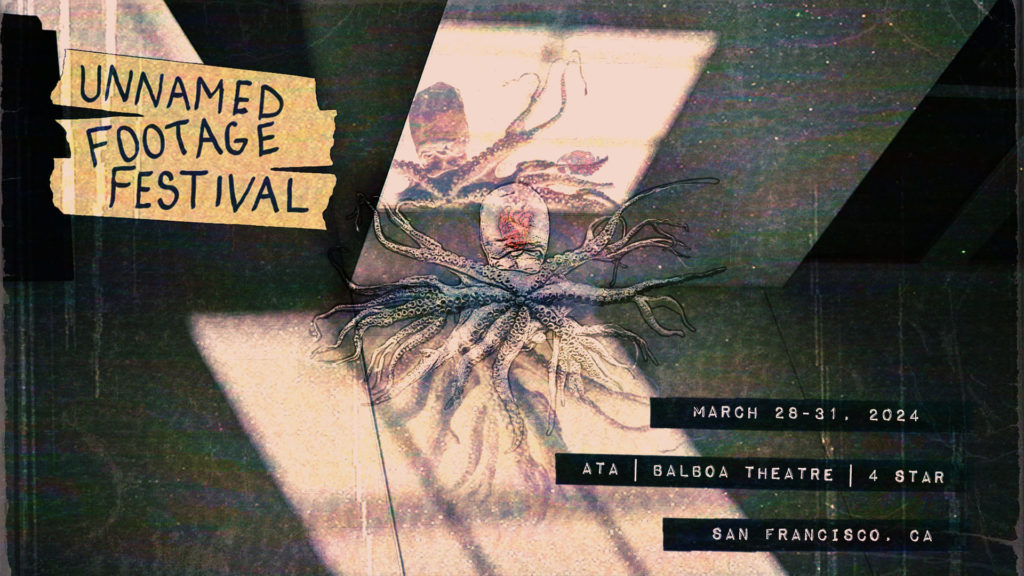
More Film Festival Coverage
The Rage Part II is a 2023 British zombie horror, written and directed by Joshua Cleave. After studying film and television production at Leeds Metropolitan University, Joshua went on to… Rob Schroeder delivers one incredible directorial debut with this aesthetically lush and deliciously convoluted mystery box film. After his car breaks down during a storm, our protagonist Glen (Vincent Kartheiser)… Veteran actress Veronica (Alice Krige) has just undergone a double mastectomy and has decided to go to a secluded retreat with her nurse in order to heal both physically and… At this year’s Unnamed Footage Festival, the lineup of short found footage films promises to immerse audiences in thrilling and chilling narratives captured through unconventional lenses. From eerie home videos… Necronomicon: Evocative Magic is a 2019 fantasy horror, directed by Mitsunori Hasegawa. Mitsunori is known for directing Onigokko (2013) and Machiawase (2013) and has also won the Grand Prize at… Cursed Land (in competition at the Dracula Film Fest under the name Cursed Land. Fate), was one of the best films I saw at that festival, a big surprise basically…The Rage Part II (2023) Film Review – All The Rage (Unnamed Footage Festival 666)
Ultrasound (2021) Film Review – A Meticulously Composed Surreal Nightmare
She Will (2021) Film Review – A Gothic Tale of Power and Feminism
Unnamed Footage Festival Short Films Collection (2024) – Short but Sweet [Unnamed Footage Festival 7]
Necronomicon: Evocative Magic (2019) Film Review – I Have the Weirdest Boner Right Now!
Cursed Land (2021) Film Review – A Haunting Family Portrait In The Vast Wilderness

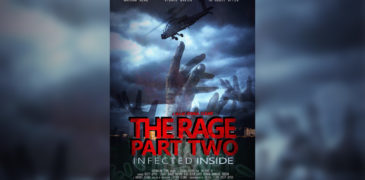
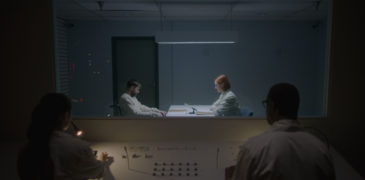
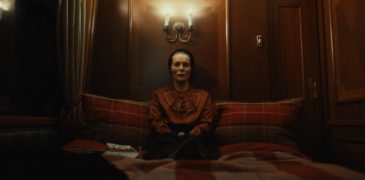
![Unnamed Footage Festival Short Films Collection (2024) – Short but Sweet [Unnamed Footage Festival 7]](https://www.grimoireofhorror.com/wp-content/uploads/2024/03/Untitled-design-28-365x180.jpg)
